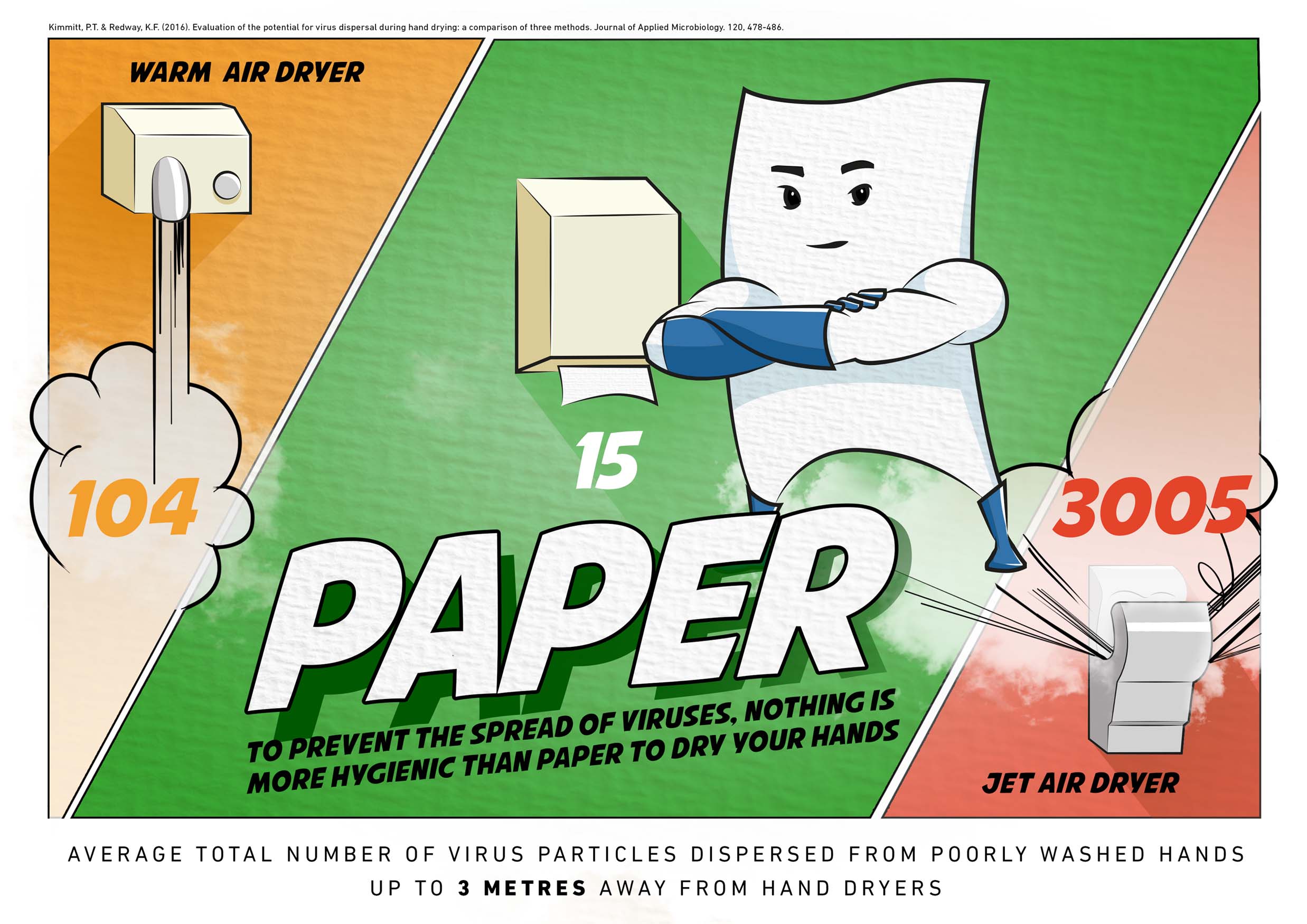New independent research has found that single-use paper towels are the most-effective way to dry hands in the washroom.
The study indicates that they help minimise the spread of viruses, including ones associated with various diseases including those causing gastro-intestinal infections such as Norovirus and Rotavirus.

More on best practice in the areas of hand hygiene, compliance, monitoring, room sterilisation and water treatment at the 2016 Infection Prevention and Containment ConferenceFind out more
Single-use towels disperse fewer micro-organisms into the environment than jet air dryers and warm air dryers and also help reduce the risk that viruses are blown into the faces of small children accompanying adults into the washroom.
The findings are expected to have serious implications for washroom facility managers in settings such as hospitals, where hygiene is paramount.
Leading microbiologists, Dr. Patrick Kimmitt and Keith Redway of the University of Westminster, studied the transmission of viruses using three different hand-drying methods: a jet air dryer, a warm air dryer and paper towels.
The use of a jet air dryer was found to transmit more virus particles further and at different heights than the other methods, with airborne virus counts also significantly greater. At a range of heights tested, on average the jet air dryer produced over 60 times more viral plaques than a warm air dryer paper and over 1,300 times more than paper towels. Combined average results at distances up to 3m away from the hand-drying devices showed that a jet air dryer produced over 20 times more viral plaques than a warm air dryer and over 190 times more than paper towels. Air samples collected 15 minutes after use showed that the jet air dryer produced over 50 times more viral plaques than a warm air dryer and over 100 times more than paper towels.
Viruses have been shown to survive on the hands for some time, with the Influenza virus lasting from 10-15 minutes, Herpes virus for up to two hours, common cold virus up to one week, and Rotavirus for up to 60 days. Viral pathogens such as Norovirus have a low infectious dose and can be shed in large numbers in faeces.
“Our findings clearly indicate that single-use paper towels spread the lowest number of viruses of all the hand-drying methods we tested,” said Dr Kimmitt.
“It is estimated that cross infection contributes to 40% of cases of healthcare-associated infections and effective hygiene in handwashing and drying is an essential step in minimising such infections.”
“Good hand hygiene can save lives, minimising infection risk,” adds Redway.
“Our research and results over the years have revealed time and again that single-use towels are the safest way to dry one’s hands in the washroom. This virus study delivers further proof that when it comes to hygiene, drying one’s hands with a single-use paper towel is the safest way to reduce the spread of viruses after a visit to the washroom.”
Previous research undertaken by the Universities of Leeds and Westminster has also found that jet air and warm air hand dryers can spread more bacteria and other microbes in a washroom environment than paper towels.
“Our industry places great emphasis on hygiene and studies have consistently shown that paper towels offer the most-effective way to limit the spread of microbes in the washroom,” said Roberto Berardi, chairman of the European Tissue Symposium.
“This latest research not only focuses on viruses for the first time, but it was also undertaken by microbiological experts at the University of Westminster and thus serves to further underline our message.
“Although there are no official guidelines on proper hand drying hygiene; it is rewarding to see markets and industries turning to single-use towels again to avoid compromising hygiene standards in washroom facilities.”





